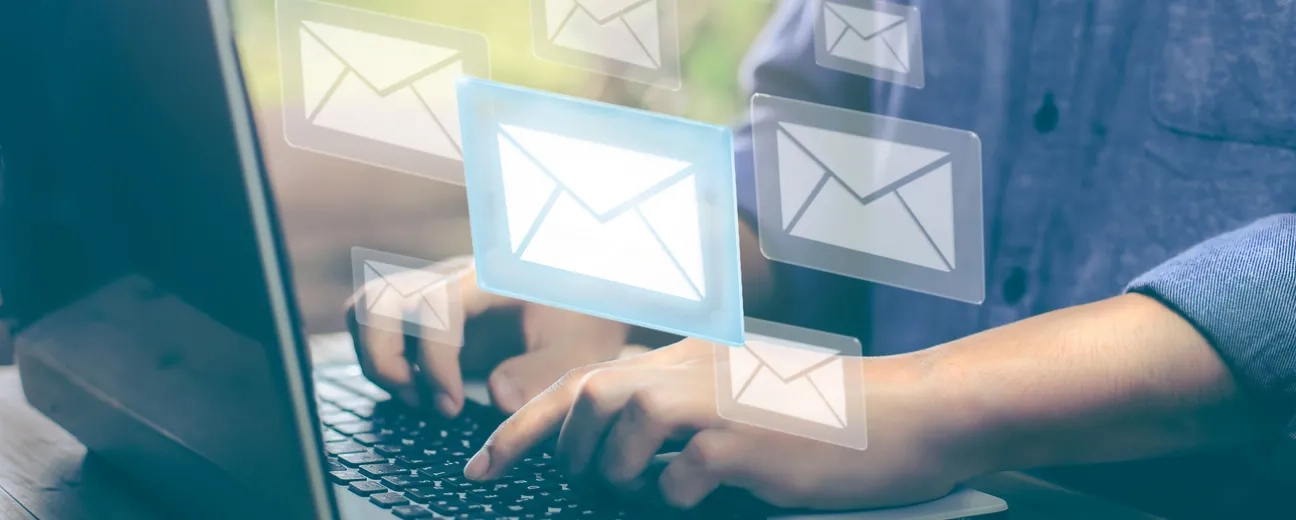
We’re excited to hear your project.
Let’s collaborate!

In the fast-evolving digital marketing landscape, trends come and go in the blink of an eye. However, one of the most surprising developments in 2024 has been the robust resurgence of email marketing as a cornerstone MarTech trend. Once considered a fading relic in the age of social media and instant messaging, email marketing has reclaimed its position at the forefront of digital strategy.
In this article, we’ll explore why email marketing is a MarTech trend in 2024 and discover how to create effective email marketing campaigns.
Email marketing is making a big comeback in 2024, surprising many who thought its best days were behind. This old-school way of reaching out to customers is now back in the spotlight, thanks to new technology, people's changing habits, and laws that protect our privacy.
Let's explain why email marketing is becoming a favorite again and how it's adapting to stay on top.
Artificial Intelligence (AI) is a game-changer for making emails feel personal. In the past, everyone got the same email, which could feel generic. Now, AI helps create emails tailored to you, almost like they're from a friend. This means the emails you get are based on what you like and how you've interacted with the brand before, making them much more interesting and relevant.
People are more concerned about their privacy these days, and laws are in place to ensure companies respect that. Email marketing fits nicely here because it requires you to opt-in – you must agree to receive emails. This means you're only getting emails from brands you're interested in, and it keeps companies on the right side of privacy laws.
Email isn't working alone; it's part of a team now. It connects with other marketing tools to create a smooth experience for you, no matter where you interact with a brand. Whether you're on their website, social media, or reading an email, the message feels consistent and connected. This teamwork makes your experience with the brand better and more personalized.
Emails today are not just text; they're more like mini websites. You might find videos to watch, polls to take, or even live updates in the email. This makes opening emails much more fun and engaging, turning a simple message into an interactive experience.
Marketers now have tools to see exactly how well their emails are doing. They can tell not just who opened an email but what they're interested in, and even if they end up buying something. This helps marketers make better emails over time, making sure they're sending stuff that people want to see.
Here are some practical tips to maximize the impact of your email marketing campaigns:
Personalization is key. Use the data you have on your subscribers to tailor your emails to their interests, preferences, and behaviors. Address them by name, recommend products based on past purchases, and send content that matches their interests. The more relevant your emails, the higher the chances they'll be opened and acted upon.
Most people check their emails on mobile devices, so ensure they look good on small screens. Use responsive design templates that adjust to different screen sizes, keep your subject lines short and sweet, and make sure your call-to-action (CTA) buttons are easy to tap.
Your subject line is your first (and sometimes only) chance to grab attention. Make it compelling, clear, and intriguing. Avoid clickbait, but do spark curiosity. Questions, personalized touches, and urgency can work well but always keep it relevant to the content of your email.
Not all subscribers are the same, so why send them the same email? Segment your list based on demographics, purchase history, engagement level, and other criteria. This allows you to send more targeted, relevant content that resonates with different segments of your audience, improving engagement and conversion rates.
Use automation to send timely and relevant emails without constant manual effort. Welcome emails for new subscribers, birthday discounts, and abandoned cart reminders can be automated based on subscriber actions. This keeps your brand top-of-mind and encourages action without overwhelming your marketing team.
Always be testing. Try different subject lines, email formats, content types, and sending times to see what works best for your audience. Use A/B testing to compare results and continually refine your approach based on what the data tells you.
Every email you send should offer value to your subscribers, whether it's informative content, entertainment, or exclusive offers. If your emails consistently provide value, subscribers will look forward to them, and you'll build a loyal and engaged audience.
Don't overdo it with the frequency of your emails, and make it easy for people to unsubscribe if they choose to. Respecting your audience's preferences and privacy not only keeps you compliant with regulations but also builds trust with your subscribers.
Don't rely on email alone. Integrate your email marketing efforts with social media, content marketing, and other channels. This creates a cohesive customer experience across all touchpoints with your brand, amplifying the impact of your campaigns.
In conclusion, email marketing is making a big comeback in 2024. It's now a key way for businesses to talk to their customers, thanks to smarter technology, privacy concerns, and fun, interactive emails.
For businesses to really benefit from email marketing, they should make sure emails are personal, easy to read on phones, have interesting subject lines, and are relevant to different types of customers.
They should also automate some emails, keep testing what works, offer valuable content, respect their audience's wishes, and work well with other marketing methods.
Are you ready to leverage email marketing this year?

We’re excited to hear your project.
Let’s collaborate!